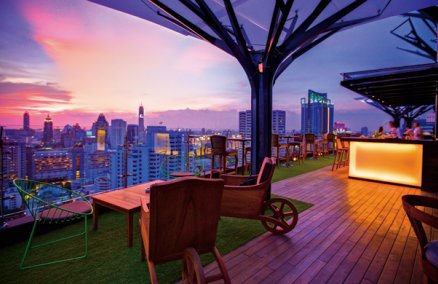I’ve been singing since I can remember. My parents were luk tung singers and my uncle had a band. My mom taught me to sing and we toured around Lampang singing at folk festivals to make a living.
I became a boxer because of my dad. He loved to go and watch boxing and cockfighting and I loved to follow him around. I also loved playing at my neighbor’s home, which was a boxing gym.
My dad spotted me kicking a punching bag one day. I did it so well he decided to send me to fight at a competition. I won by knockout.
Muay Thai changed my destiny. I was widely known as the sweet boxer who could sing. I always dressed up girly and wore makeup. It was really different from other lady boxers who were mostly tomboys and tried to be tough like a man. My alias was Namwannoi Sakboonma (Little Syrup), which matched my sweet look. I won 35 consecutive fights and became champion of the Northern region.
The Thai Championship fight in 2002 was one of the biggest matches of my life. I had to fight the Northeastern champion who was also undefeated. I won and became national flyweight champion at the age of 15. I was so badly hurt during the fight I caught a fever and couldn’t get out of bed for five days.
Young fighters have it tough compared to other children of their age. I had to wake up at five in the morning to go jog for eight kilometers before school. After school, I had to run to the boxing gym to practice until nighttime. The good part was I had a leaner, fitter body than other girls my age.
Boxing taught me to be tough in everything in my life. It’s the toughest sport. If you fight for five rounds, you need to practice seven rounds. You have to endure longer than your rivals.
I always used to jump from the ring straight to the stage so people knew me as a boxer who could sing well. After I won the title belt, I was signed by RSiam to become a luk tung singer and got to release my first album, Perd Jai Sao Tae, in 2007.
Doing two things at once doesn’t always work. I had to quit RSiam after one year as I couldn’t study and tour at the same time. I was really exhausted and my parents wanted me to graduate from high school first. I felt so useless as I couldn’t go out to sing or box to earn money for my family because of the contract I had with RSiam. Fortunately, they took me back a few years later.
I love all kinds of design. I love clothing, graphics and architecture. That’s why I chose to study architect at Sripathum University. Juggling being a singer and sending my homework in on time is so exhausting but I really love it. If I can’t work as a singer anymore, this can be my proper career.
I nearly lost my voice forever. I recently realized that I had been singing incorrectly all my life and it was destroying my larynx. I had to have an operation as my doctor said that if I didn’t I could lose my voice completely.
You can’t make everyone love you. I try to understand that many people hate me. If you love someone, then they can’t do any wrong, but if you really hate someone then even their breathing will annoy you.
Haters are good at finding little things to hate. All I can do is just keep doing the best job I can.
I admit to having had plastic surgery. It’s not a bad thing that you need to hide. I had a nose job to fix my flat nose and that’s it. I haven’t had lots of plastic surgery like people think.
You can’t always be lucky. My dad leaving us made me understand that nothing last forever. At least I still have a good relationship with him and he visits us a lot.
Be friends with your parents. I think many teen problems stem from the fact that the parents and children aren’t close. So many times when teenagers get into trouble, they run to their friends for help, but most of the time, it’s the parents who clear it up for them.
Good spirit makes you valuable. I have met rich people and poor people and I realized that having lots of money doesn’t make you a good person.
Remember that people only let you know the part that they want you to know. You might never know what they really are like.























